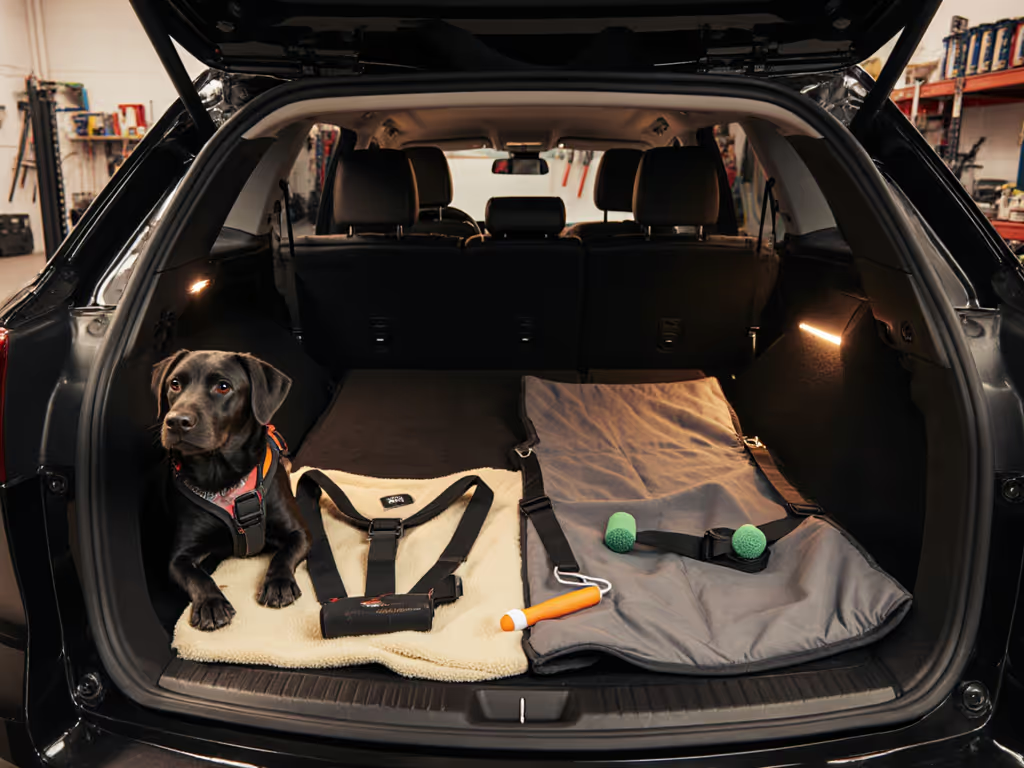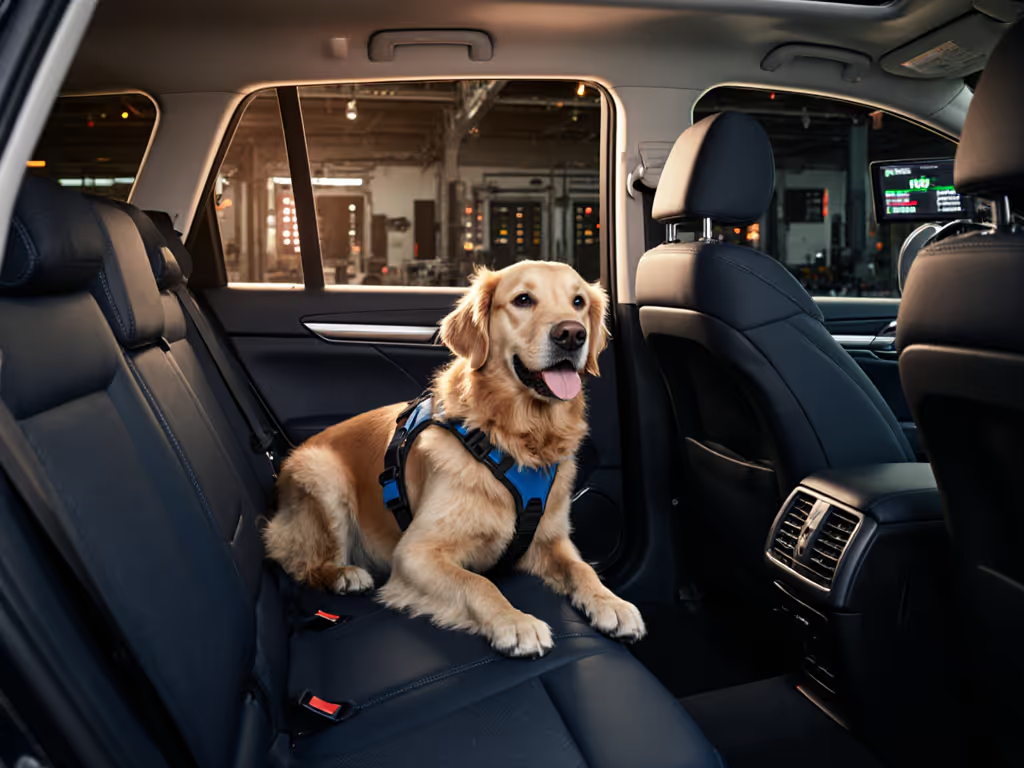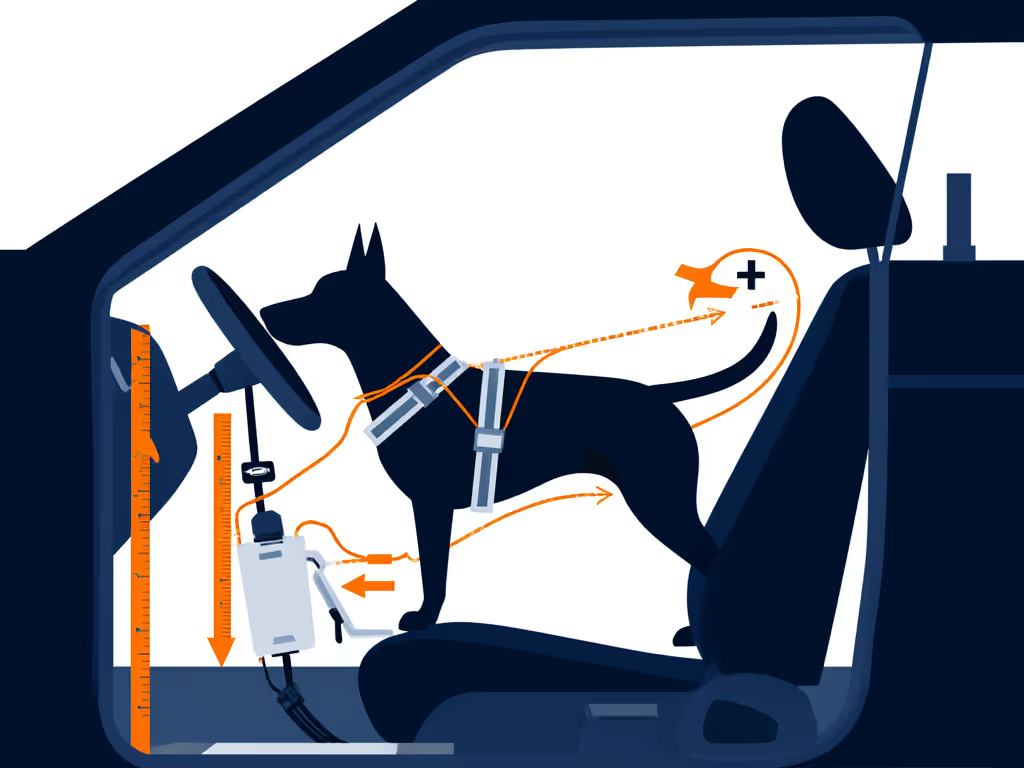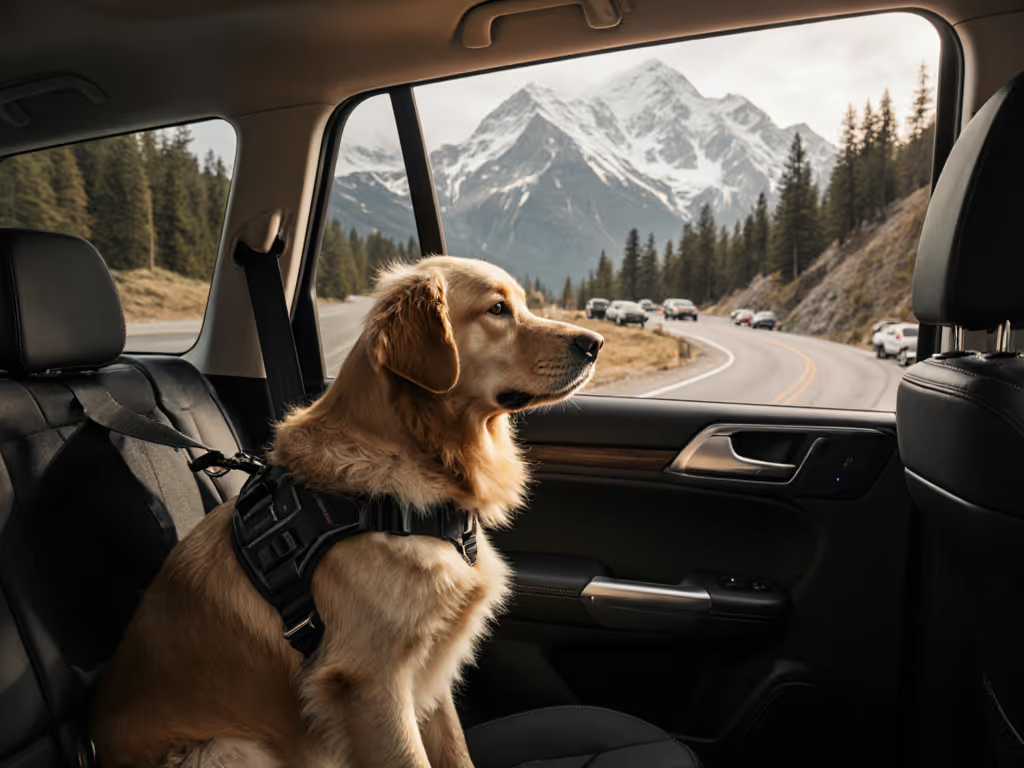
Pet Restraint Crash Testing: How Safety Standards Protect Your Dog

When you buckle your dog into a car harness or cargo barrier, "universal fit" claims won't save them in a collision. Real dog car safety products demand rigorous validation, yet only pet restraint crash testing separates marketing fluff from life-saving gear. I've measured hundreds of vehicle interiors and installed thousands of restraints, and one truth always holds: if it rattles, we refit until it doesn't. Today, we dissect how safety standards actually work for pets, and why most products fail when it matters most.
FAQ Deep Dive: Pet Restraint Safety Standards
Why don't pet restraints have federal crash standards like child seats?
Unlike child restraints governed by FMVSS 213, standards for pets don't exist, because pets aren't legally considered vehicle occupants. FMVSS 213 is exclusively for children, testing head excursion limits, harness integrity, and injury prevention in 30-35 mph frontal impacts. As the NHTSA states: "This standard applies to child restraint systems for use in motor vehicles and aircraft" (49 CFR §571.213). No parallel regulation mandates similar testing for dogs.
The gap leaves manufacturers free to copy FMVSS 213 language without verification. I've seen harnesses labeled "FMVSS 213 compliant" that merely use lap belts, ignoring critical metrics like head trajectory or chest compression. True validation requires independent replication of these tests under controlled conditions.
How does the Center for Pet Safety test these products?
The nonprofit Center for Pet Safety testing program fills this void by adapting FMVSS 213 protocols for dogs. Their methodology is brutally precise:
- Using a 55 lb. kinetic test dog dummy (representing a large breed like a German Shepherd)
- Simulating 30 mph frontal collisions on a sled rig
- Measuring:
- Head excursion beyond FMVSS 213 limits (indicating dashboard/windshield impact)
- Harness integrity (straps tearing, buckles failing)
- Chest compression (risk of cardiac injury)
- Secondary collision hazards (e.g., dog becoming a projectile)
In their landmark 2013 study, only 1 of 6 large-canine harnesses passed without critical failures. Restraint A showed "minimal tearing" but dangerous head excursion. The rest catastrophically failed: straps detached, chest plates choked dummies, and dogs launched into front seats. As the report states: "Probable severe/fatal injuries to the companion animal are likely based on test evidence."

What does "crash tested" really mean for my dog?
"Crash tested" is meaningless without context. Many brands tout vague claims like "tested for safety" using:
- Static pull tests (hanging weights on harnesses), useless for collision dynamics
- Small-dog dummies (tested at weights irrelevant to 50+ lb. breeds)
- Non-validated labs (no third-party oversight)
True safety certification for pet restraints requires:
- Dynamic sled testing at 30+ mph (not static pulls)
- FMVSS 213-aligned metrics (head excursion < 29 inches, no system separation)
- Public test reports with video evidence (like CPS's)
Most products omit these specifics. For vetted, crash-focused options, see our Dog Seat Belt Comparison. I recently measured a client's "crash-tested" cargo barrier whose mounting posts flexed 8mm under brake-force simulation, enough to create rattles and compromise structural integrity. Model-year awareness matters: a 2020 Toyota RAV4's LATCH anchors sit 3mm deeper than 2023 models, requiring spacers I keep in my torque kit.
Why do most "universal" harnesses fail in crashes?
Two words: anchor geometry. Human child seats anchor to rigid LATCH points designed for 65 lb. forces. Pet harnesses often misuse seatbelt webbing or flimsy cargo hooks not engineered for collision loads. The CPS study revealed:
- Connection point failures (Type I lap belts vs. Type II shoulder+laps)
- Harness slippage on the dog's torso (causing throat compression)
- Tether detachment from vehicle anchors (launching the dog forward)
One client's harness looked secure until we tested it in their 2021 Honda Passport. The tether's metal ring vibrated against the seatbelt buckle, wearing a stress fracture. We refitted it with a nylon-coated anchor ring from my kit, torqueing to 8 Nm. Rattle check: silence at 65 mph on rough pavement.
How can I verify if my restraint is actually safe?
Forget marketing brochures. Demand proof:
"If it lacks a Center for Pet Safety certification report with your dog's size class, treat it as untested."
Do this now:
- Check the CPS Certified Products List, updated annually. Only harnesses/crates passing their FMVSS 213-adapted tests earn this.
- Measure your vehicle's anchors. Not all LATCH points are equal. My torque wrench and calipers live in my center console for this reason.
- Validate tether routing: does it avoid seatbelt buckle contact? Angle tension away from door panels?
- Test for noise: load your dog's weight into the harness, then drive over speed bumps. Rattle = failure.
I still carry threadlocker after learning a millimeter's variance in Mazda CX-5 headrest posts (2019 vs. 2021) made the difference between silent rides and dashboard-rattling chaos. Clean installs aren't magic: they are measurements, proper order of operations, and checked torque.
What's the real takeaway for pet parents?
Crash tested car seats for dogs aren't optional extras. They are physics requirements. A 60 lb. dog in a 30 mph collision becomes a 1,800 lb. projectile. Without certified restraints, you're gambling with:
- Your dog's spinal integrity (from head-to-dash impacts)
- Your family's safety (a loose dog strikes humans at 3x a bagged-grocery impact force)
- Legal liability (18 states mandate pet restraints; fines reach $1,000+)
I prioritize torque-conscious installs using factory anchors, not zip ties or suction cups. Sequence matters: tether first, then harness snugness, then rattle check. Last week, I adjusted a client's barrier in a Subaru Outback by adding 1.5mm spacers behind the cargo anchors. The headrest posts seemed identical to older models until vibration analytics proved otherwise. Mission complete: quiet, secure, and traceable.
Your Actionable Next Step
Verify your restraint's CPS certification today. Visit the Center for Pet Safety's website and cross-reference your harness or crate model. No certification? Don't wait for an accident to prove it's inadequate. Measure your vehicle's anchor points with a digital caliper (I use the $25 Mitutoyo model in my kit), and demand spacers or torque specs from the manufacturer. If they can't provide them, it's not a safety product. It's guesswork with your dog's life. Rattle check: if installation isn't silent and precise, we refit until it is. Your dog's safety depends on the details you refuse to ignore.
- Luis Andrade Specializing in turning "universal" into precise: measuring posts, angles, and clearances for OEM-like, non-rattling installs since 2008.



